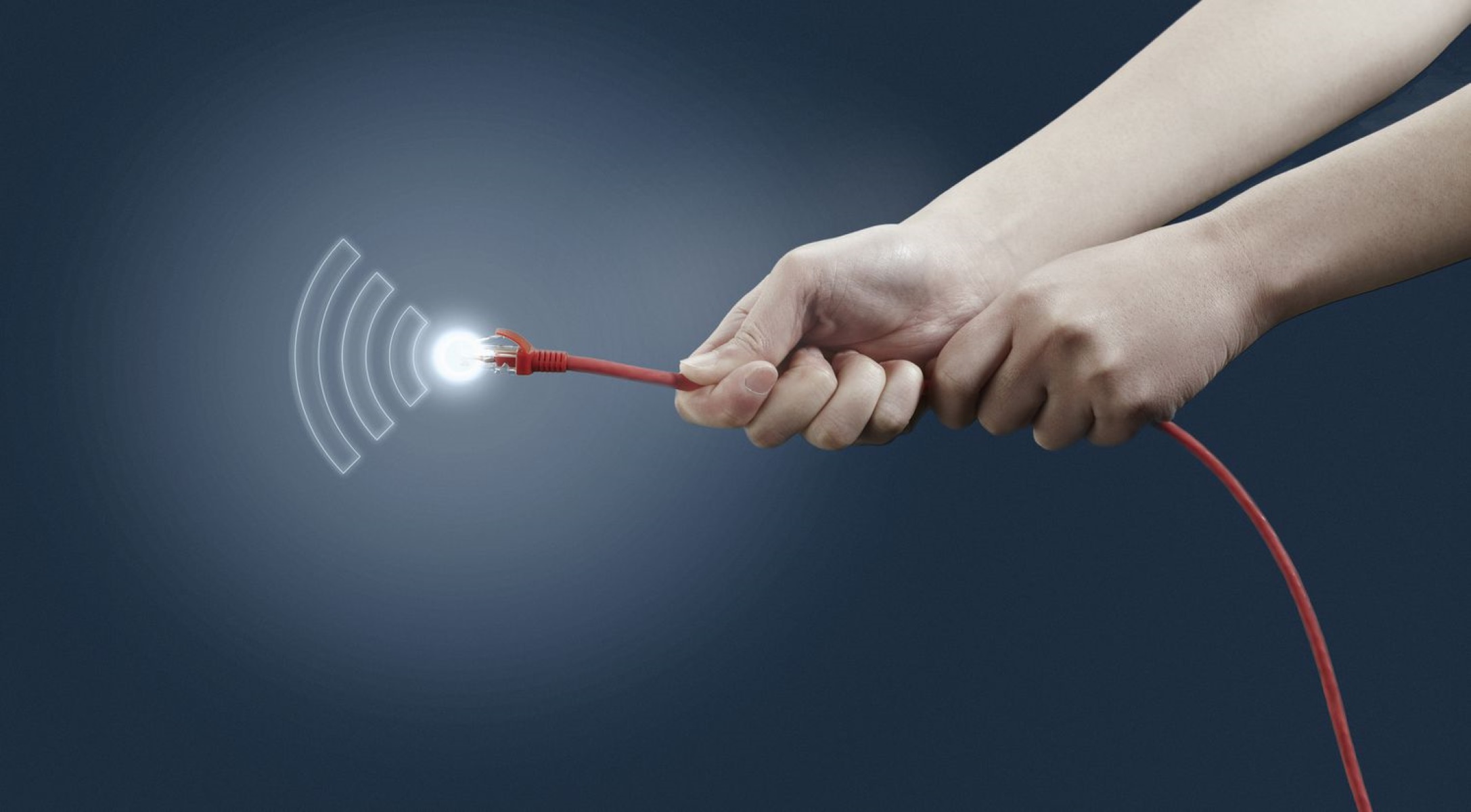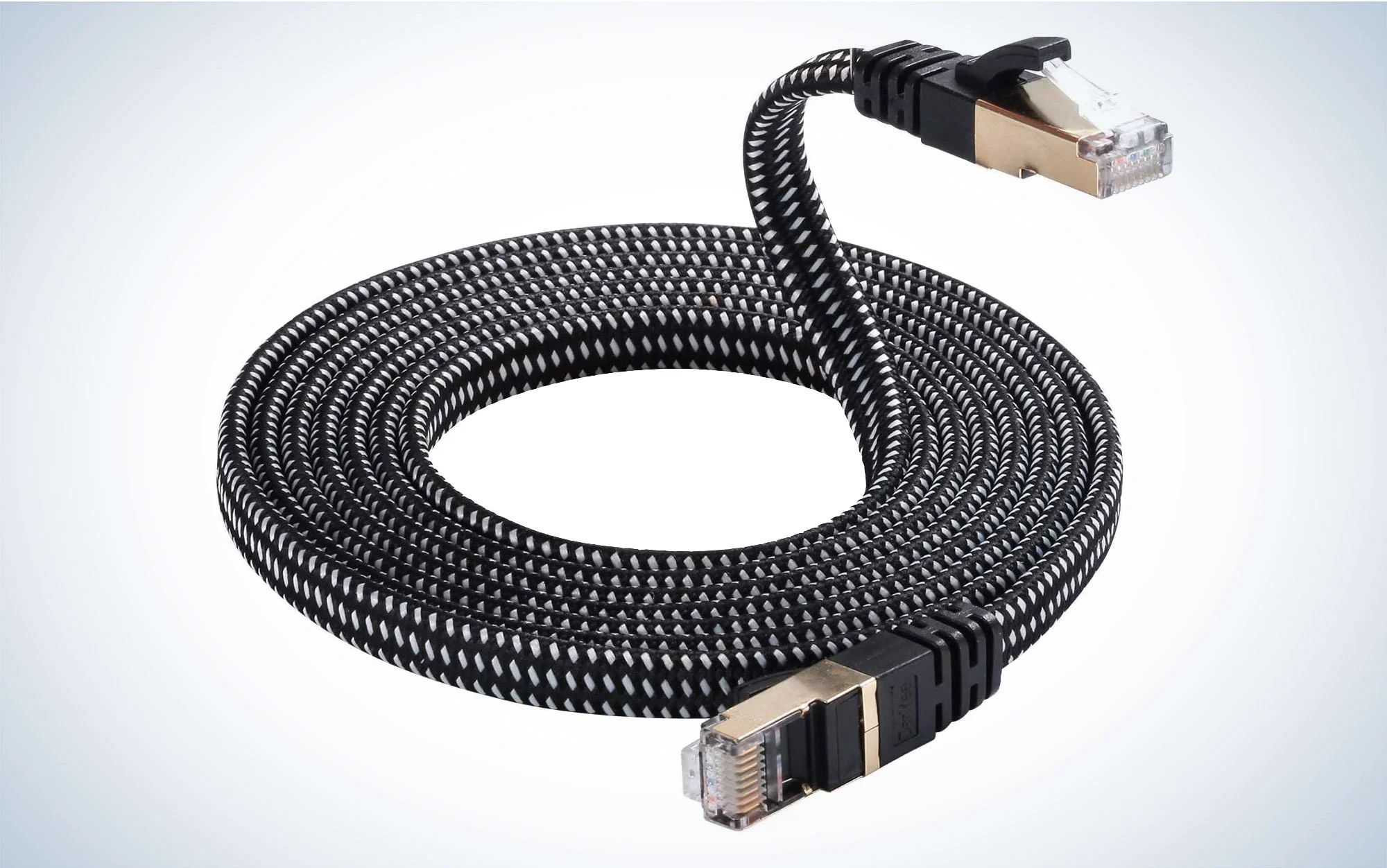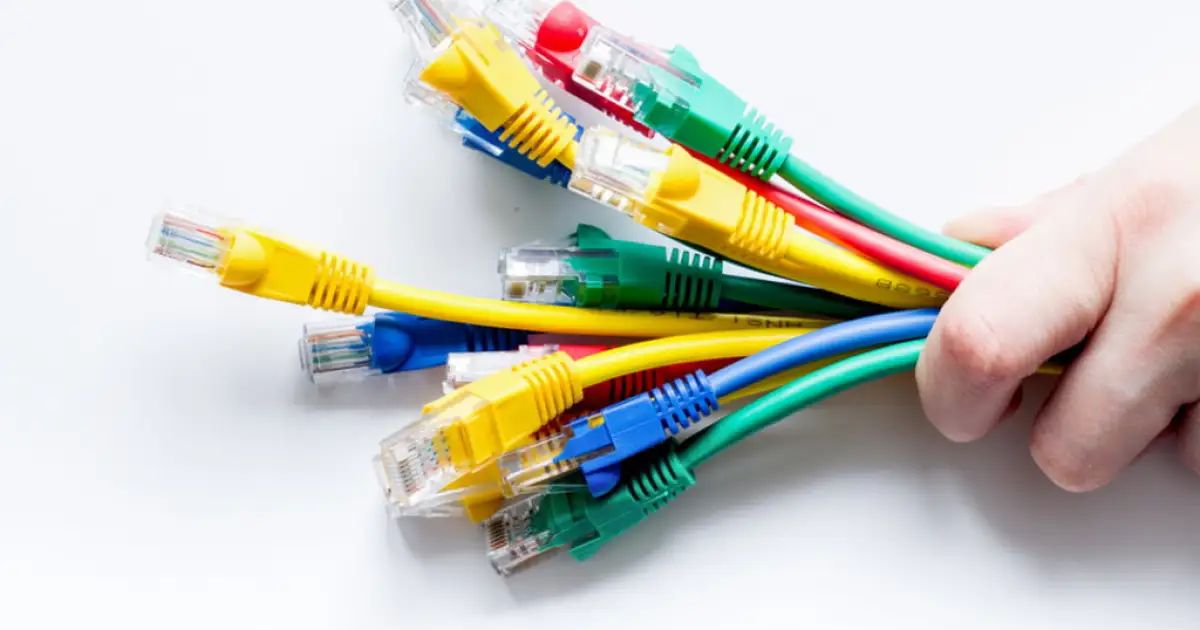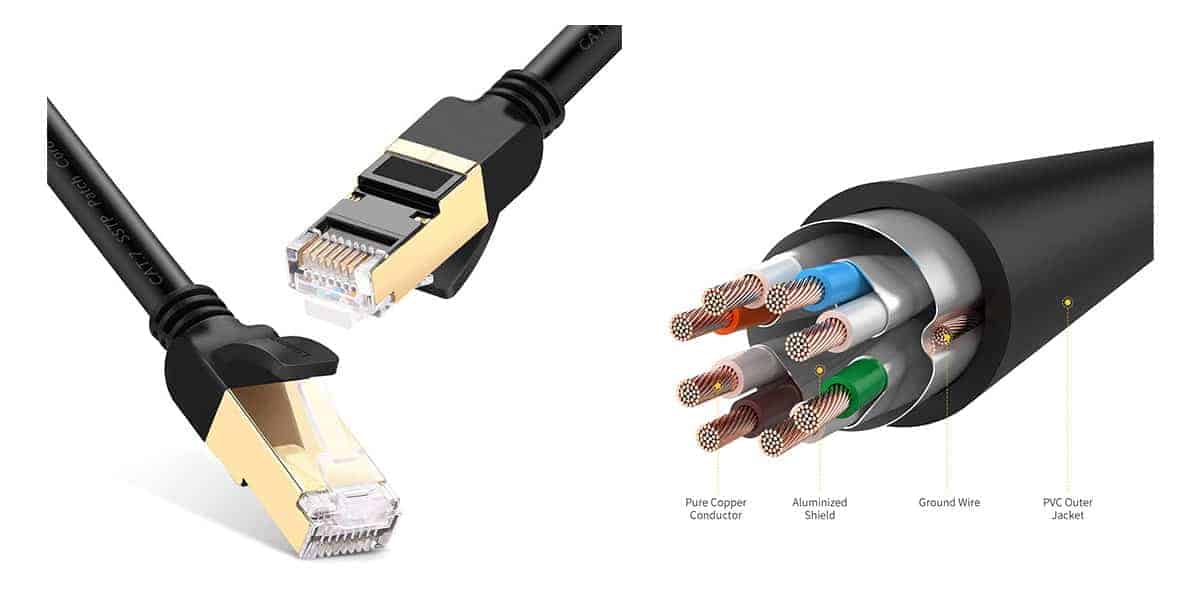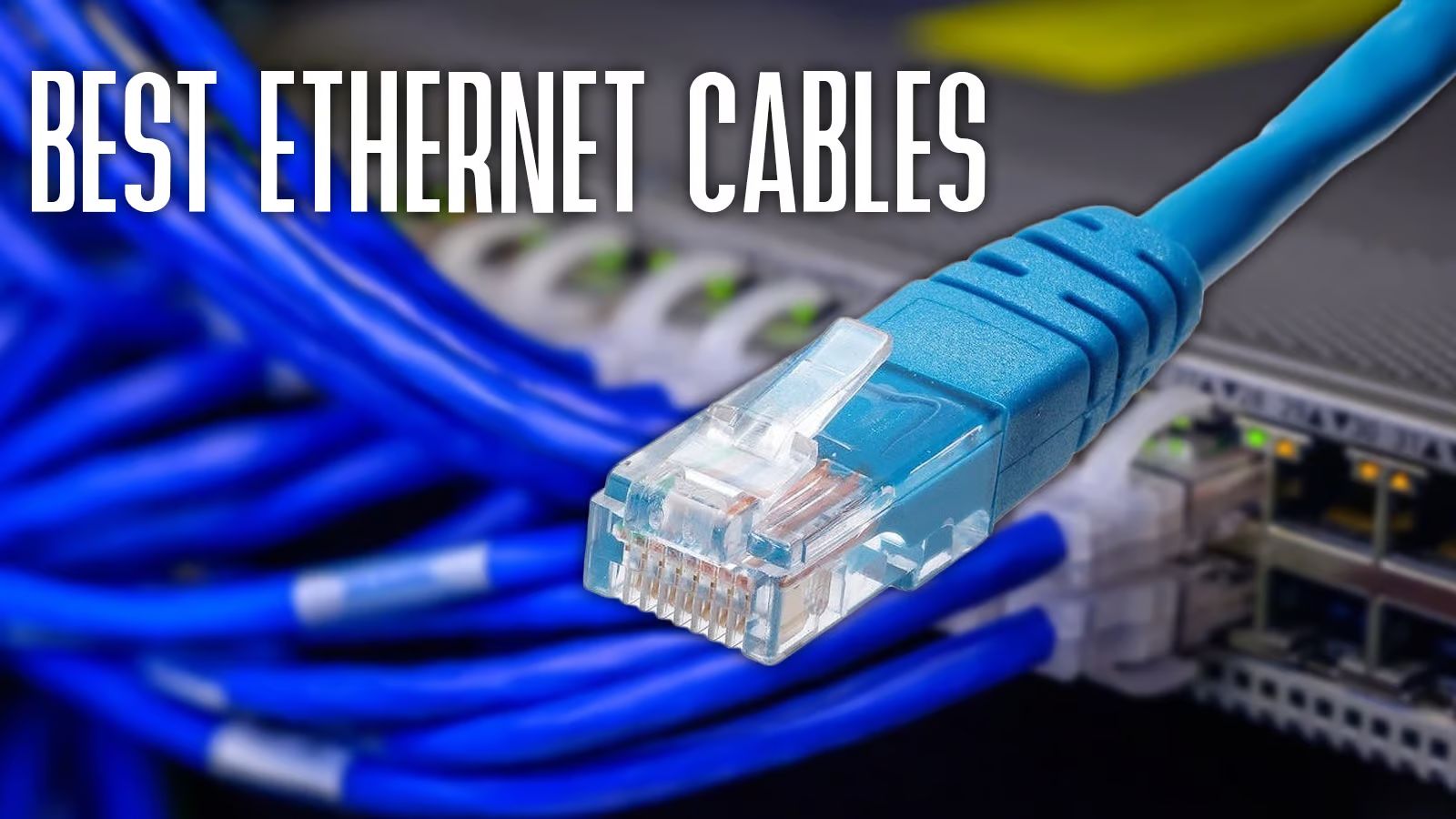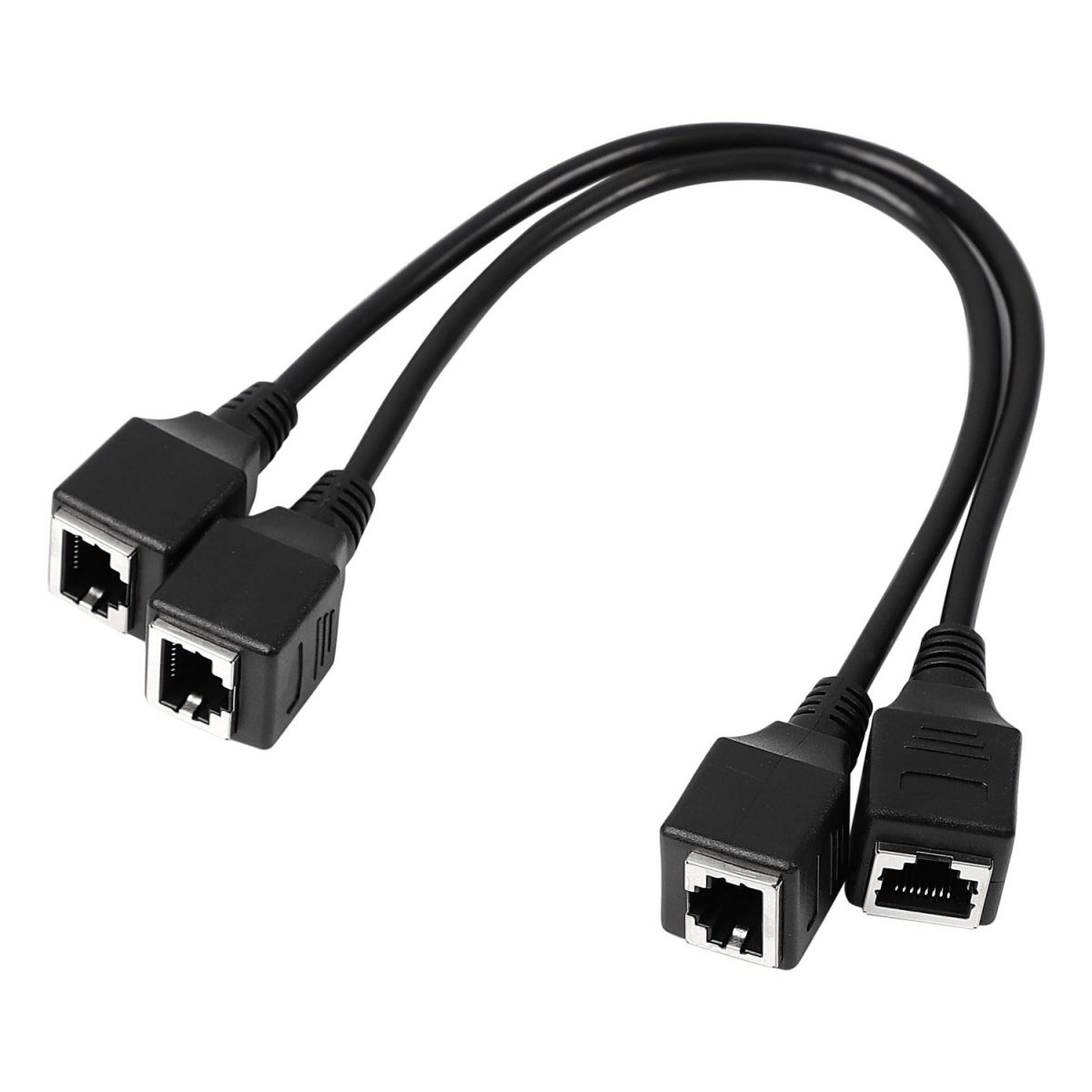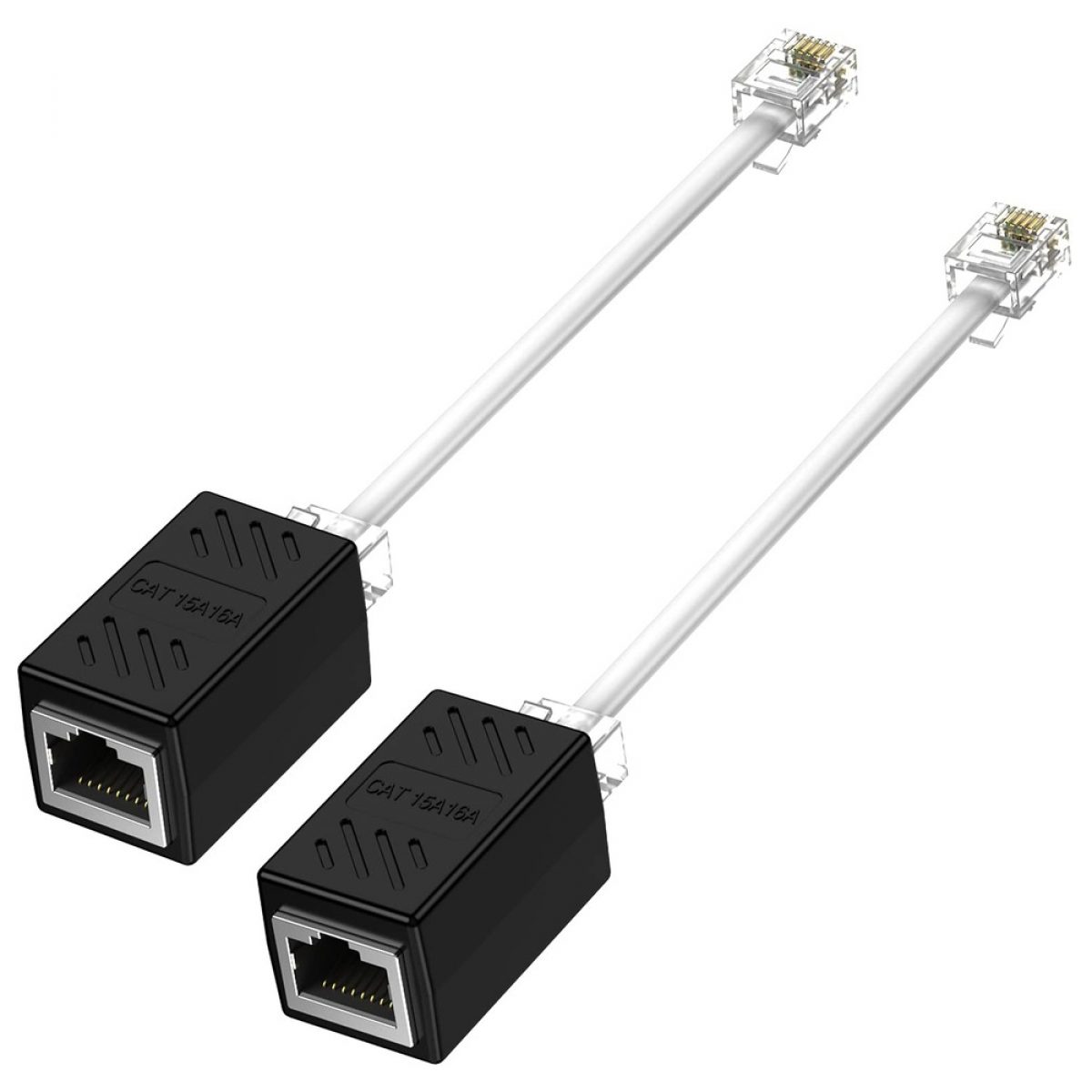Introduction
Welcome to the world of internet connectivity, where speed and reliability are key. When it comes to networking, having a fast and stable connection is crucial for smooth data transfer and seamless online activities. This is where Ethernet cables come into play, providing a reliable and high-speed connection for various devices.
In recent years, Cat 6 Ethernet cables have gained popularity for their impressive performance. Cat 6, short for Category 6, is a type of Ethernet cable that offers faster data transmission speeds and better overall performance compared to its predecessors. Whether you’re an avid gamer, a professional who relies on fast file transfers, or simply seeking a dependable internet connection for your home network, understanding the capabilities of a Cat 6 Ethernet cable is essential.
In this article, we will dive into the world of Cat 6 Ethernet cables and explore their speed capabilities. We will also discuss the factors that can affect their performance, and whether upgrading to a Cat 6 Ethernet cable can truly improve your internet speed. So, strap in and get ready to boost your network performance!
What is a Cat 6 Ethernet cable?
If you’ve ever set up a home network or dealt with internet connectivity, you’re likely familiar with Ethernet cables. These cables are used to establish a wired connection between devices, such as computers, gaming consoles, routers, and modems, facilitating high-speed data transfer.
A Cat 6 Ethernet cable, also known as Category 6 cable, is a type of Ethernet cable that offers enhanced performance over its predecessors, such as Cat 5 and Cat 5e cables. It is designed to support higher data transfer rates and reduce crosstalk interference between wire pairs. Cat 6 cables are backward compatible, which means they can be used with devices that require lower-specification cables.
One of the notable features of a Cat 6 Ethernet cable is its capability to support Gigabit Ethernet, with data transfer rates of up to 10 gigabits per second (Gbps) over short distances. This makes it ideal for demanding applications that require fast and reliable network connections, such as online gaming, video streaming, and large file transfers.
Cat 6 Ethernet cables are constructed with four twisted pairs of copper wires and utilize a higher gauge wire (typically 23 AWG) compared to previous cable categories. The tighter twists reduce signal interference and crosstalk, ensuring better signal integrity and overall performance. Cat 6 cables also utilize stringent manufacturing standards to maintain consistent quality and performance.
It is important to note that Cat 6 Ethernet cables come in different types, including solid and stranded cables. Solid Cat 6 cables feature a single solid conductor, making them suitable for in-wall installations or longer cable runs. On the other hand, stranded Cat 6 cables consist of multiple smaller wires stranded together, offering flexibility and durability, making them ideal for shorter distance connections or portable devices.
Overall, a Cat 6 Ethernet cable is designed to provide reliable and high-performance networking capabilities, making it a popular choice for both residential and commercial environments. Its improved transmission speed and reduced signal interference make it a valuable asset when it comes to establishing a fast and stable wired network connection.
Benefits of using a Cat 6 Ethernet cable
When it comes to networking, the type of cable you use can have a significant impact on the performance and reliability of your internet connection. Cat 6 Ethernet cables offer several benefits that make them a preferred choice for high-speed and stable networking. Here are some of the key advantages of using a Cat 6 Ethernet cable:
- Improved data transfer speeds: One of the primary advantages of Cat 6 Ethernet cables is their ability to support higher data transfer rates. With speeds of up to 10 Gbps, Cat 6 cables provide a significant boost in network performance, allowing for faster file transfers, smoother video streaming, and lag-free online gaming experiences.
- Better signal quality: Cat 6 Ethernet cables are designed with tighter twists and enhanced insulation, which reduces signal interference and crosstalk. This results in improved signal quality and overall network performance, ensuring stable and reliable connectivity for your devices.
- Future-proofing your network: Investing in Cat 6 Ethernet cables ensures that your network is ready for the future. As technology continues to evolve, higher bandwidth requirements will become more common. By using Cat 6 cables, you can future-proof your network and avoid the need for frequent cable upgrades.
- Compatibility with older devices: Cat 6 Ethernet cables are backward compatible with older Ethernet standards, such as Cat 5 and Cat 5e. This means that you can use a Cat 6 cable with devices that only require lower-specification cables, without sacrificing performance. It provides flexibility and ensures compatibility with a wide range of devices.
- Reduced network latency: With faster data transfer speeds and reduced signal interference, Cat 6 Ethernet cables can help minimize network latency. This is especially beneficial for online gamers, where every millisecond counts in achieving a smooth and responsive gaming experience.
- Longer cable runs: Cat 6 Ethernet cables have the capability to support longer cable runs compared to their predecessors, such as Cat 5 and Cat 5e. This is particularly advantageous for larger homes or offices, where you may need to connect devices over longer distances without compromising network performance.
By utilizing Cat 6 Ethernet cables, you can experience the full potential of your network, ensuring fast and reliable connectivity for all your devices. Whether you’re a professional seeking faster file transfers or a casual user looking for a seamless online experience, the benefits of using Cat 6 Ethernet cables make them a valuable investment in optimizing your network performance.
How fast is a Cat 6 Ethernet cable?
When it comes to determining the speed of a Cat 6 Ethernet cable, it’s important to understand that the cable itself doesn’t have a set speed. Instead, the speed is determined by the Ethernet standard that the cable supports and the capabilities of the devices connected to it.
Cat 6 Ethernet cables are designed to support Gigabit Ethernet, which provides data transfer rates of up to 1,000 megabits per second (Mbps) or 1 gigabit per second (Gbps). This speed is achieved when the cable is used with devices that have Gigabit Ethernet network cards or ports.
However, it’s worth noting that the maximum speed of a Cat 6 Ethernet cable can only be achieved over shorter distances, typically up to 55 meters (180 feet). Beyond this distance, the cable’s performance may start to degrade, and the maximum speed may not be sustained.
Another factor that can affect the speed of a Cat 6 Ethernet cable is the quality of the cable itself. Poorly manufactured or damaged cables may not be able to achieve the maximum speed and performance expected from a Cat 6 cable. It’s important to ensure that you choose high-quality, certified Cat 6 cables to ensure optimal performance.
Additionally, the speed of a Cat 6 Ethernet cable can be influenced by other factors such as the network equipment, network configuration, and the type and quality of the internet service provider (ISP) connection. It’s important to ensure that all components of your network infrastructure are capable of supporting the desired speed.
In summary, a Cat 6 Ethernet cable is designed to support Gigabit Ethernet, with data transfer speeds of up to 1 Gbps. However, achieving this maximum speed depends on several factors such as the network equipment, cable quality, and distance. It’s crucial to maintain the appropriate network setup and choose high-quality cables to ensure optimal performance.
Factors that can affect the speed of a Cat 6 Ethernet cable
While Cat 6 Ethernet cables are designed to provide high-speed and reliable network connections, several factors can influence their performance. Understanding these factors can help you optimize the speed and overall efficiency of your Cat 6 Ethernet cable setup. Here are some key factors that can affect the speed of a Cat 6 Ethernet cable:
- Cable length: The length of the Ethernet cable can have a direct impact on the speed it can sustain. According to industry standards, Cat 6 cables can support their maximum speed of 1 Gbps up to a length of 55 meters (180 feet). As the cable length increases beyond this, the performance may degrade, resulting in lower speeds.
- Cable quality and construction: The quality of the Cat 6 Ethernet cable plays a crucial role in its performance. Poorly manufactured or damaged cables may not be able to achieve the maximum speed and stability expected from a Cat 6 cable. It’s essential to invest in high-quality, certified Cat 6 cables from reputable manufacturers to ensure optimal performance.
- Network equipment: The network equipment, including routers, switches, and network adapters, can impact the speed of a Cat 6 Ethernet cable. It’s important to use network equipment that supports Gigabit Ethernet to take full advantage of the cable’s capabilities. Older or lower-specification network devices may limit the speed of the overall network.
- Network configuration: The way your network is configured can also impact the speed of a Cat 6 Ethernet cable. Factors such as network congestion, improper cable termination, and incorrect network settings can lead to performance issues and slower speeds. It’s crucial to ensure proper network configuration and troubleshoot any potential issues.
- Internet service provider (ISP) connection: The speed of your internet connection provided by your ISP can affect the overall speed of a Cat 6 Ethernet cable. Even with a high-speed Ethernet cable, if your internet connection is slow or throttled, you may not be able to achieve the maximum potential speed.
- Interference: External factors such as electromagnetic interference (EMI) and radio frequency interference (RFI) can affect the performance of Cat 6 Ethernet cables. Keep in mind that running Ethernet cables alongside power cables or in close proximity to electronic devices can introduce interference, leading to reduced speeds and network stability.
By considering and addressing these factors, you can optimize the speed and performance of your Cat 6 Ethernet cable setup. Ensuring proper cable quality, utilizing compatible network equipment, configuring your network correctly, and minimizing interference are essential steps in maximizing the speed and reliability of your Cat 6 Ethernet cable connection.
Do you need a Cat 6 Ethernet cable for your home network?
Choosing the right Ethernet cable for your home network depends on your specific needs and requirements. While Cat 6 Ethernet cables offer numerous benefits, it’s essential to evaluate whether they are necessary for your setup. Here are some factors to consider when deciding if a Cat 6 Ethernet cable is needed for your home network:
- Internet speed: Take into account the speed of your internet connection. If you have a high-speed internet plan with download and upload speeds that exceed the capabilities of Cat 5 or Cat 5e cables, upgrading to a Cat 6 cable may be beneficial to fully utilize your internet bandwidth.
- Network activities: Consider the type of activities you perform on your home network. If you engage in activities that require fast and reliable connections, such as online gaming, streaming high-definition (HD) or 4K videos, or transferring large files, a Cat 6 Ethernet cable can provide you with the necessary speed and stability.
- Future-proofing: If you’re looking to future-proof your home network, investing in a Cat 6 Ethernet cable is a wise choice. While Cat 5 and Cat 5e cables may suffice for current needs, technology advancements often demand higher speeds and increased bandwidth. Upgrading to a Cat 6 cable ensures that your network is ready for future upgrades and requirements.
- Distance: Consider the distance between your network devices. Cat 6 Ethernet cables are capable of maintaining their maximum speed of 1 Gbps up to a certain distance. If you have devices that are located far away from your router or central hub, using Cat 6 cables may be beneficial to maintain high speeds over longer distances.
- Budget: Evaluate your budget and consider the cost difference between Cat 6 and lower-specification Ethernet cables. While Cat 6 cables may cost slightly more than Cat 5 or Cat 5e cables, the price difference is often minimal. If the benefits of Cat 6 cables align with your needs and budget, it may be worth the investment.
In most cases, using a Cat 6 Ethernet cable can provide you with the necessary performance and future-proofing for your home network. However, if your internet speed is relatively low or you engage in basic online activities that don’t require a high-speed connection, Cat 5e or even Cat 5 cables may suffice.
Ultimately, it’s important to assess your specific needs, consider the factors mentioned above, and make an informed decision based on your requirements, budget, and future network plans to determine if a Cat 6 Ethernet cable is necessary for your home network.
Can a Cat 6 Ethernet cable improve your internet speed?
Upgrading to a Cat 6 Ethernet cable can potentially improve your internet speed, but it depends on several factors. While the cable itself is designed to support higher speeds, it’s crucial to evaluate your network setup and understand how different components can impact your internet speed. Here are some considerations:
- Internet plan: First, check your internet plan and the speeds offered by your internet service provider (ISP). If your plan provides speeds that are faster than what can be achieved with lower-specification cables like Cat 5 or Cat 5e, upgrading to a Cat 6 cable can help you take full advantage of your plan’s capabilities.
- Network equipment: Your network equipment, including the router and modem, plays a significant role in determining your internet speed. Ensure that your equipment supports faster speeds and has Gigabit Ethernet ports to fully utilize the capabilities of a Cat 6 Ethernet cable.
- Device capabilities: The devices connected to your network need to support the faster speeds offered by a Cat 6 cable. If your devices, such as computers, gaming consoles, or smart TVs, have older network adapters or network cards, they may not be able to achieve the maximum speeds provided by a Cat 6 cable.
- Network congestion: Network congestion can affect your internet speed, especially during peak usage times. While a Cat 6 cable can improve your internal network speed, it may not have an impact on the speed provided by your ISP if your connection is congested due to factors outside of your control.
- Distance and cable quality: The distance between your devices and the router, as well as the quality of the Cat 6 cable, can affect your internet speed. Cat 6 cables are designed to maintain maximum speeds up to a certain distance. If your devices are located far away from the router, you may still experience speed degradation beyond that distance.
Upgrading to a Cat 6 Ethernet cable alone may not guarantee a significant improvement in your internet speed if other factors prevent you from achieving higher speeds. However, combining the use of a Cat 6 cable with a compatible internet plan, modern network equipment, and capable devices can enhance your internet speed, especially for activities that require fast and stable connections like online gaming, streaming high-definition videos, or large file transfers.
Remember that the overall internet speed also depends on factors outside of your network, such as the capabilities and infrastructure of your ISP. While a Cat 6 Ethernet cable can help optimize your internal network speed, it cannot overcome limitations imposed by your ISP’s connection speed.
In summary, upgrading to a Cat 6 Ethernet cable can potentially improve your internet speed, but it’s essential to consider other factors such as your internet plan, network equipment, device capabilities, and network congestion. Make sure to assess your specific needs and ensure that all components of your network are compatible and capable of delivering the desired speeds before upgrading to a Cat 6 Ethernet cable.
Conclusion
Choosing the right Ethernet cable for your networking needs is crucial for achieving fast and reliable internet speeds. Cat 6 Ethernet cables offer significant advantages over their predecessors, providing improved data transfer speeds, better signal quality, and future-proofing capabilities. These cables are ideal for demanding applications such as online gaming, HD video streaming, and large file transfers.
While Cat 6 Ethernet cables can support speeds of up to 1 Gbps, it’s important to consider factors such as cable length, quality, network equipment, and internet plan to ensure optimal performance. Additionally, the benefits of using a Cat 6 cable may be more pronounced in scenarios where bandwidth-intensive activities are regularly performed and when devices and network equipment are capable of supporting higher speeds.
It’s worth noting that the benefits of upgrading to a Cat 6 Ethernet cable should be evaluated in relation to your specific needs and budget. If you have a lower-speed internet plan or engage in basic online activities that do not require high-speed connections, Cat 5e or Cat 5 cables may suffice.
In conclusion, Cat 6 Ethernet cables offer enhanced performance, improved signal quality, and the potential for faster internet speeds. By understanding the capabilities and considering your network requirements, you can determine if a Cat 6 Ethernet cable is necessary for your home network setup. Whether you choose Cat 6 or an alternative, maintaining a well-configured network and using high-quality cables will contribute to a reliable and efficient network connection.







